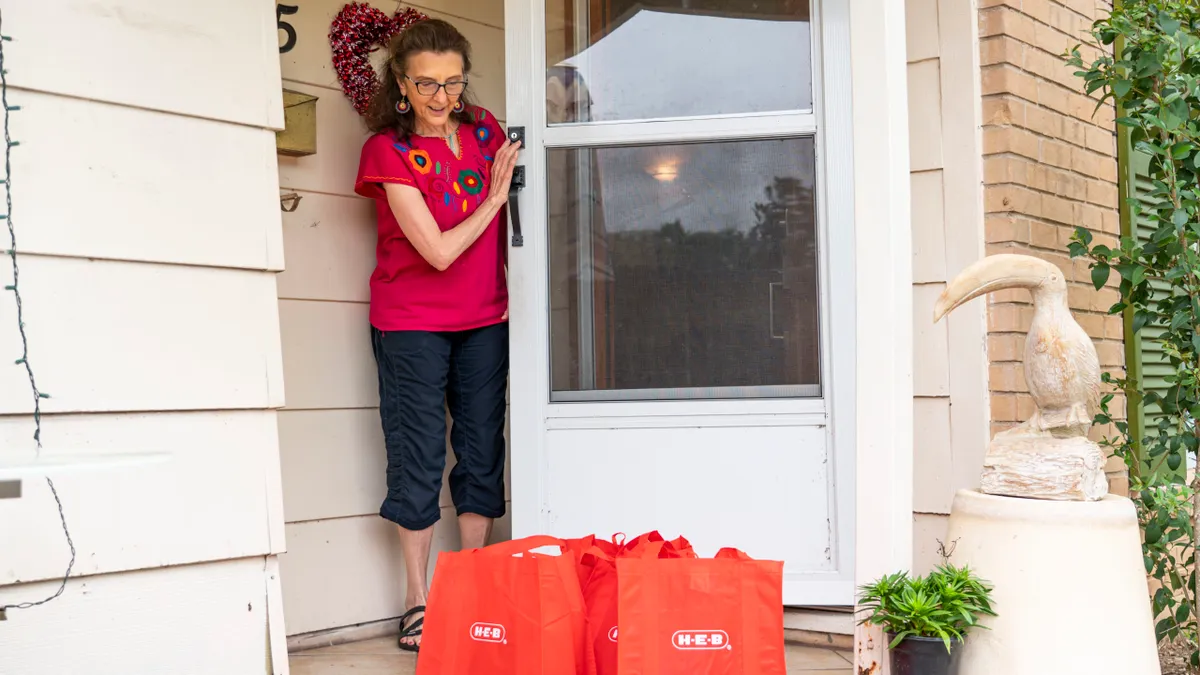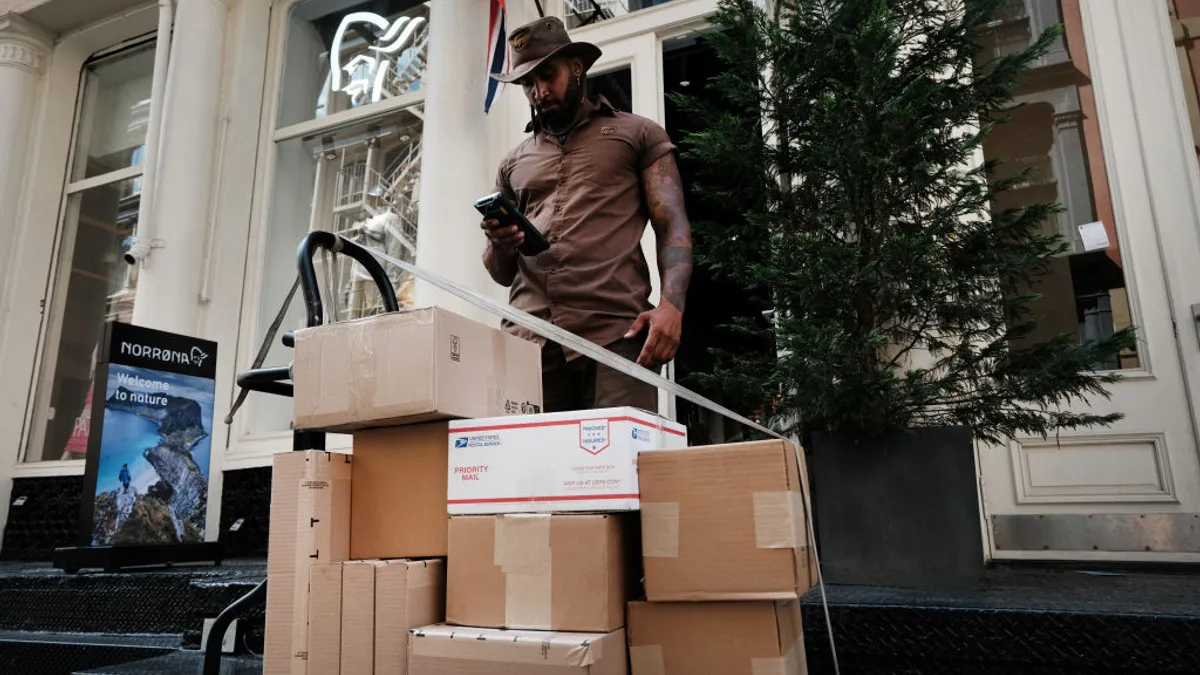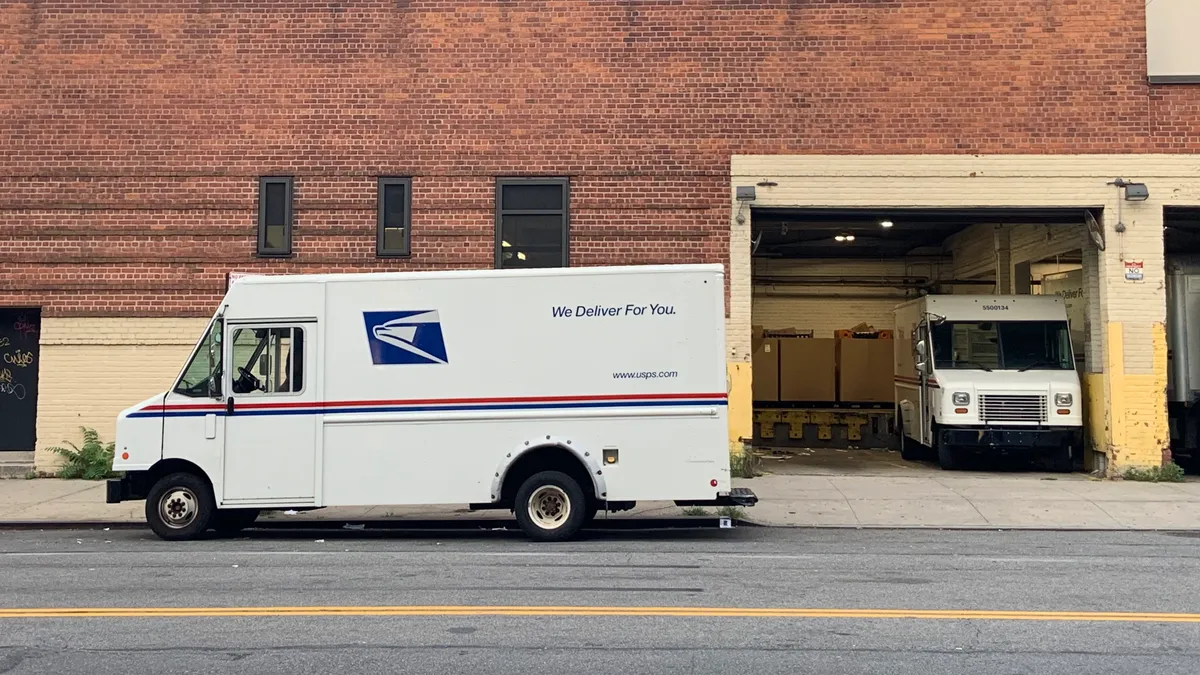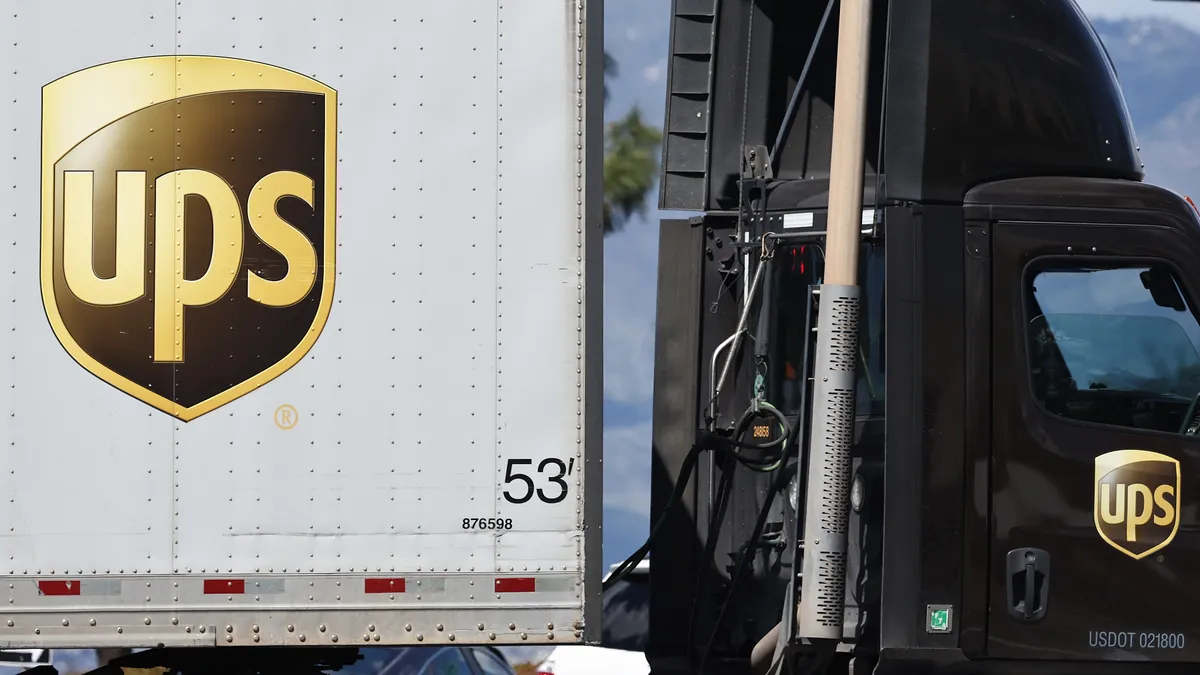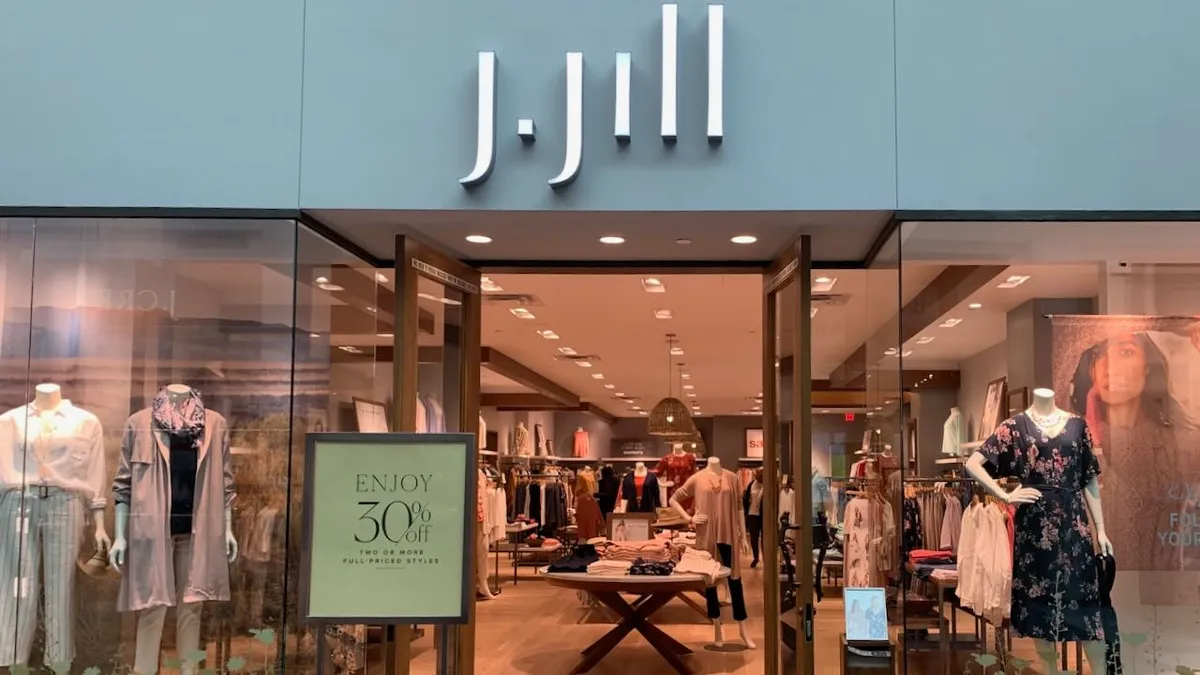This story is part of a series on the trends that will shape supply chains in 2021 and beyond. You can find all the articles on our trendline.
In 2021, last-mile innovation isn't really a technology play, according to the experts. The technologies to move retail delivery forward already exist and are in use. But the near-term evolution of the last mile is going to be about how retailers, carriers and orchestration platforms collaborate to fully weave last-mile services into the retail landscape so they contribute to, rather than distract from, the overall business of retail.
"COVID has cleared the decks so that everybody is more focused on: 'We need to empower our physical location to be much more efficient, to utilize existing assets, people, product and infrastructure,'" said Bill Thayer, co-CEO of last-mile technology provider Fillogic, at the National Retail Federation's Chapter One virtual conference.
Thayer, along with executives from Uber, Danone and Tanger Outlet Centers, discussed four elements driving the future last-mile innovations for retailers.
1. Connecting the dots between stores and delivery
The relationship between inventory visibility and consumer delivery was undervalued before the pandemic, according to Thayer. Suddenly retailers were incentivized to fulfill orders from shuttered stores with trapped inventory and many did so. The future of that practice is being sorted out now and inventory visibility is a determinative factor.
"Stores were never designed to operate like fulfillment locations. That was never their goal," said Thayer, adding that before COVID, a lack of sophisticated inventory management between in-store and omnichannel sales was more acceptable. The volume of non-traditional sales during the pandemic changed that.
Retailers have prime space in their stores from which to fulfill orders, often delivered directly to customers, Thayer said. But tacking delivery onto an inventory management system not intended to handle it can lead to problems — and make scaling precarious.
Inventory visibility can "connect the dots" between physical infrastructure and last-mile services, he said. Inventory visibility developed with delivery in mind can make way for the channel flexibility retailers have sorely needed through the pandemic.
2. Efficiency and density
One order, one delivery simply won't do in the post-COVID world. Retailers and delivery partners are working out ways to bundle deliveries or encourage consumers to time or accept their orders in a bundle without their knowledge.
"There are ways that you can actually artificially create more pickup density," said Erik Logerquist, Uber Direct's business lead. He suggested directing customers to one of only a few delivery windows throughout the day. "That's a way that we can see a higher batch rate that creates cost savings for us so we can pass those cost savings on to retailers," Logerquist said.
Tanger Outlets is working on a plan to do just that with Fillogic. Outdoor shopping malls like outlets haven't traditionally aggregated logistics services of any kind, explained Thayer. Fillogic and Tanger are working together to do that batching work — at least on the post-purchase logistics side of the outlet mall.
"We're rounding up all those retailers together to aggregate the volume to make that process more efficient, and, of course, getting products and orders into Uber direct vehicles," Thayer said.
3. Data transparency for retailers, brands and consumers
When the cost-benefit equation of running to the store for an item changed with pandemic risk, so did the stakes for delivery tracking — highlighting the inconsistencies in tracking capabilities between last-mile providers.
"Not only do consumers want things on demand. They want to be informed every step of that journey," Logerquist said. "Traditional carriers have made some improvements in real-time tracking. But, consumers nowadays are used to seeing their french fries delivered in real-time on their smartphone. And I think they're really starting to want that same experience with all the merchandise that they purchase."
"We were a bit blind in terms of last-mile delivery data."

Omer Waysman
Danone Director of Global E-commerce and Business Development
Consumers want transparency, but so do brands and retailers, according to Danone Director of Global E-commerce and Business Development Omer Waysman. Danone recently realized that in order to optimize its last-mile services, it needed to be able to see the data for every delivery — something not all partners provide.
"We were a bit blind in terms of last-mile delivery data ... Obviously, we are able to do surveys, etc. But the data was with the external partner. And so we were not able to really follow it and really track it in the best way," Waysman said.
Getting ahold of more data allows Danone to measure consumer satisfaction, which Waysman said is paramount for a cost-heavy service like last-mile delivery. For a CPG company like Danone, the financial analysis for Danone's direct-to-consumer business is relatively complicated, he said.
Danone turned to Bringg to orchestrate its direct-to-consumer last-mile business with the hope of using a more complete data picture to better understand consumer behavior pre- and post-purchase – with sustainability and life cycle analysis in mind.
4. Scalability for spikes
If 2020 taught retailers anything, it was they need to be ready for times of feast and famine when it comes to sales volume. For the last mile, that means scalable capacity.
It's no surprise that Uber is a proponent of last-mile services not dependent on fixed assets — but gig-economy-backed services like Uber have indeed seen an explosion in the last year for this reason.
"Traditional providers typically have fixed assets, fixed employee bases, which is really hard to scale and manage spikes in demand," said Logerquist.
For Danone, that scalability is all in the partners retailers and brands choose.
"What was important for us ... is to make sure that the partners we are working with are agile, flexible and can adapt themselves to every situation in every market," Waysman said.



